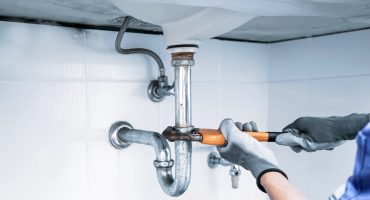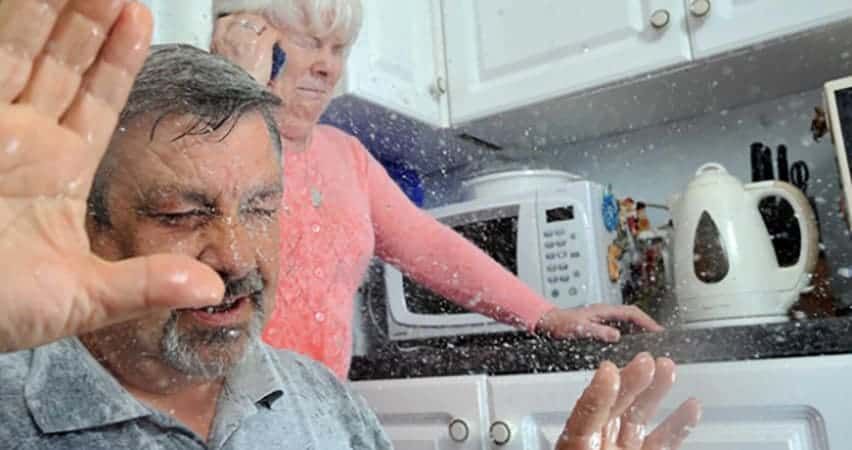We've stumbled on this great article relating to Main Plumbing Issues Found in Old Houses listed below on the internet and felt it made good sense to talk about it with you on this page.

Older homes commonly include appeal, character, and history, however they can likewise bring a host of plumbing problems. Whether you're managing maturing pipes, low water stress, or leaks, recognizing how to deal with these common issues is crucial to maintaining a risk-free and practical home. In this guide, we'll check out the normal plumbing challenges encountered by older homes and give functional remedies to keep your plumbing in top form.
Understanding Typical Plumbing Concerns
Aging Pipelines
One of one of the most typical concerns in older homes is aging pipelines. Depending on the age in which your home was built, the pipes may be made from products that have degraded with time, such as galvanized steel, cast iron, or even lead. These materials can wear away, come to be weak, or create leaks, bring about water damages and possible carcinogen.
Water Top Quality Testing
Older pipelines can influence the quality of your water. Conduct a water top quality test to check for pollutants such as lead, rust, or various other pollutants that might be introduced by aging pipes.
Solutions for Typical Pipes Problems
Replacing Aging Pipelines
If your home has old, weakening pipes, think about replacing them with modern products like copper or PEX. This can be a significant investment, however it will certainly protect against future problems and enhance the security and dependability of your plumbing system.
Repairing Low Water Pressure
To repair low water pressure, begin by cleansing or changing old components and eliminating mineral build-up in the pipes. If the issue continues, it may be needed to change areas of rusty pipes.
Fixing and Changing Leaking Pipelines
For tiny leaks, you can utilize pipeline clamps or epoxy putty as a temporary solution. Nevertheless, it's best to change dripping pipes entirely to stay clear of additional damages.
Updating Fixtures
Updating old fixtures to modern, water-efficient versions can enhance your home's plumbing efficiency and reduce water intake. Seek fixtures with the WaterSense tag for the best efficiency.
Managing Pipe Deterioration
If your pipes are worn away, changing them with corrosion-resistant materials like copper, PVC, or PEX is the most effective solution. Routine evaluations and water quality upkeep can assist avoid further rust.
Low Water Pressure
If you're experiencing low tide pressure, it could be because of natural resources, deterioration inside the pipelines, or old fixtures that are no more operating successfully. This can be a major aggravation, specifically in locations like showers and sinks.
Dripping Pipelines
Leakages are another constant issue in older homes, typically caused by rusty or damaged pipelines. Also tiny leakages can bring about considerable water damage, mold growth, and increased water bills if not addressed immediately.
Out-of-date Fixtures
Obsolete plumbing fixtures such as taps, commodes, and showerheads not just look old yet may likewise be much less effective, prone to leaks, or inappropriate with modern pipes criteria.
Pipe Rust
Deterioration is a common trouble in older pipelines, especially those made from galvanized steel or cast iron. Rusty pipes can restrict water circulation, cause staining, and ultimately lead to leakages or pipeline ruptureds.
Analyzing the Condition of Your Pipes
Evaluating Noticeable Pipes
Start by evaluating any kind of noticeable pipes in your house, such as those in cellars, crawl spaces, or under sinks. Seek signs of rust, leakages, or corrosion, which can show underlying issues.
Looking for Leakages
Check for leaks by examining areas around taps, commodes, and under sinks. You can likewise monitor your water meter prior to and after a period of no water utilize to detect concealed leakages.
When to Call an Expert
While some plumbing problems can be managed with DIY remedies, there are times when it's ideal to employ a specialist. If you're managing significant leaks, comprehensive deterioration, or are unsure regarding the condition of your pipes, a licensed plumbing professional can give professional evaluation and repair service.
Preventive Upkeep Tips
Normal Examinations
Routinely check your pipes system for indications of wear and tear. Catching issues early can protect against expensive repair services down the line.
Water Pressure Regulation
Guarantee your water stress is within the suggested array to prevent stressing your pipelines and fixtures. A plumbing technician can install a pressure regulatory authority if needed.
Water Quality Upkeep
Install water filters or softeners if your water quality is poor. This can shield your pipes and fixtures from damage triggered by tough water or pollutants.
Aggressive Pipeline Replacement
If your home has very old pipelines, consider proactive replacement before significant issues develop. This can conserve you from emergency repair services and water damages.
Conclusion
Handling pipes issues in older homes requires a mix of caution, preventive maintenance, and prompt upgrades. By recognizing the typical obstacles and knowing when to look for professional assistance, you can guarantee your pipes system remains useful and trustworthy for years to find.
Common Plumbing Issues in Older Homes
Pipe corrosion
Pipe corrosion is a common plumbing issue in older homes. Several factors can cause pipes to corrode:
Water: Ironically, water is the number one cause of pipe corrosion. When water seeps into cracks in pipes, it can cause the metal to rust and break down, leading to leaks or even burst pipes.
Oxygen: Oxygen is another significant culprit in pipe corrosion. When oxygen interacts with water, it can cause the metal to oxidize and weaken.
Chemicals: Chemicals such as chlorine and fluoride can also contribute to pipe corrosion. These chemicals can react with the metal in pipes, causing them to break down over time.
Leaky pipes
Pipes that leak is one of the most common plumbing issues plaguing residents of older houses. While a small leak may not be a problem initially, it can lead to significant problems if left unaddressed. In addition, water damage can be very costly to repair and may cause damage to electric fixtures, promote mold growth and cause many other issues.
Worn-out fixtures
Older homes often have worn-out fixtures which may need replacement. Over time, the finishes on fixtures can wear down, exposing the underlying metal to corrosion. This can cause fixtures to leak or even break completely. It s best to have a professional plumbing contractor regularly inspect the fixtures in older homes and replaces them if necessary.
Faulty water heaters
A leaky water heater can cause severe damage to the home as it can be both a flood and fire hazard. Call a plumber immediately if it appears that the water heater might be leaking.
If the heater isn t working correctly, it could be because the pilot has gone out. The pilot light going out may indicate gas supply issues or leaks. It is also worth checking the thermostat to see if it needs to be adjusted.
If the water heater is making strange noises, it could be due to sediment buildup in the tank. Sediment can interfere with the heating elements and cause them to overheat. Overheating can damage the tank and shorten the lifespan of the water heater.
https://www.norfleetfamilyplumbing.com/blog/common-plumbing-issues-in-older-homes

Do you appreciate reading about ? Put a remark down the page. We will be glad to listen to your suggestions about this review. In hopes to see you back again soon. Sharing is nice. One never knows, you could be doing someone a favor. Thank you so much for taking the time to read it.
Click Here
Comments on “Proven Ways to Address Plumbing Issues in Older Homes”